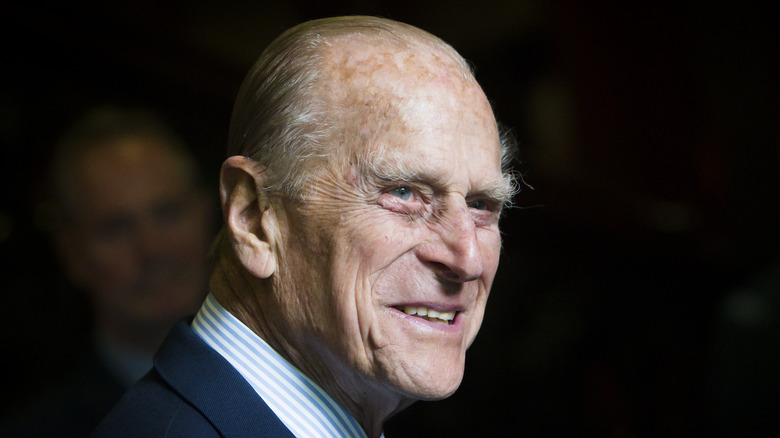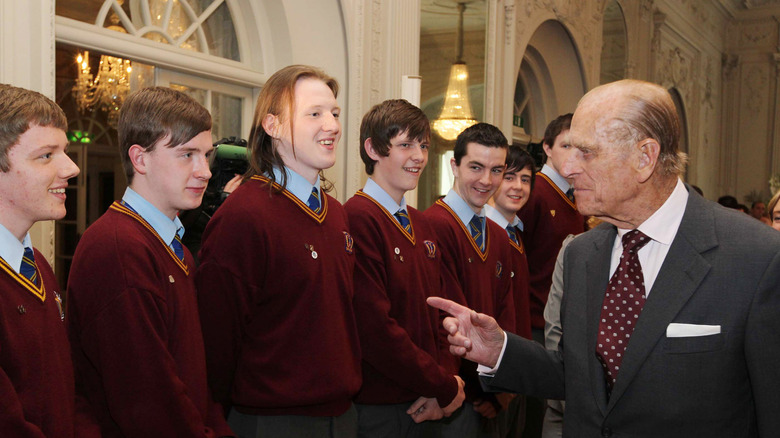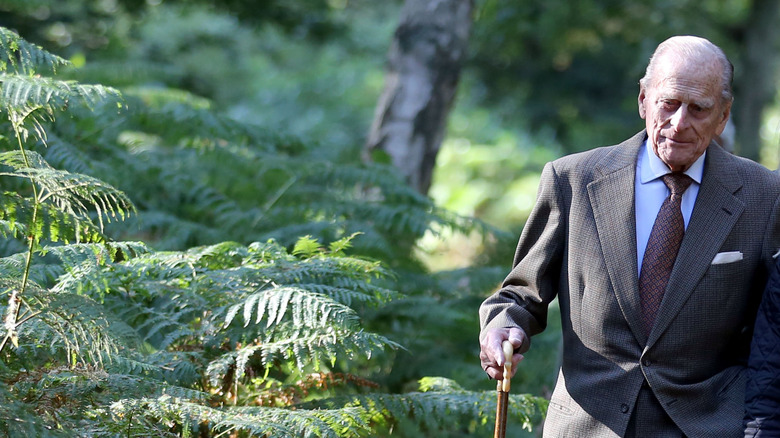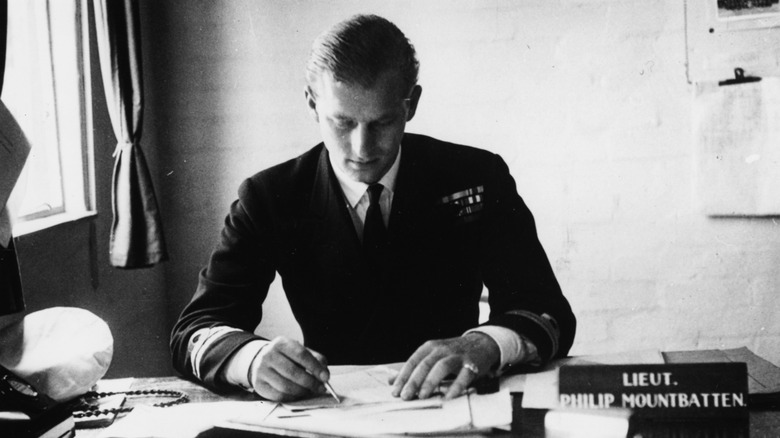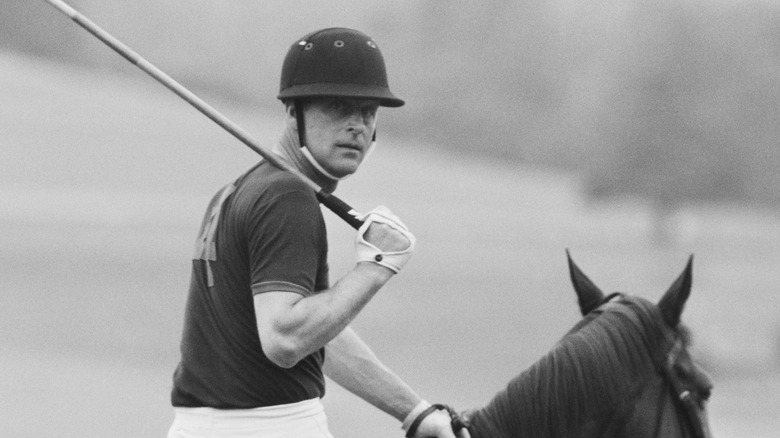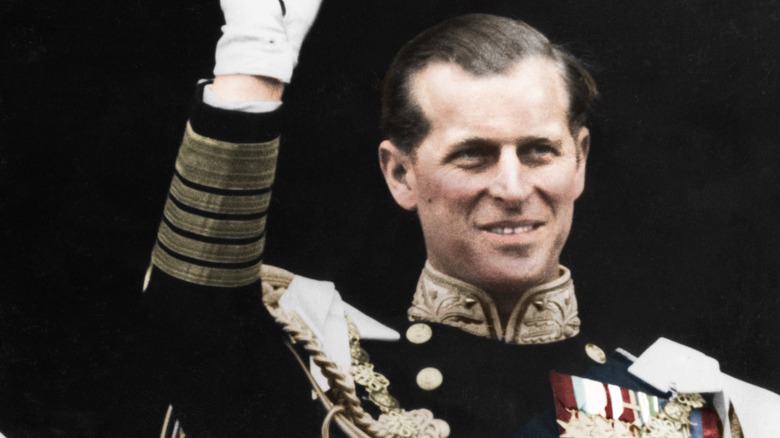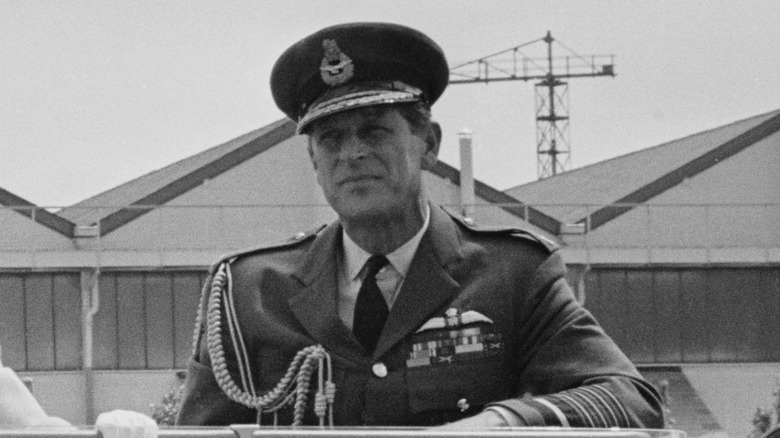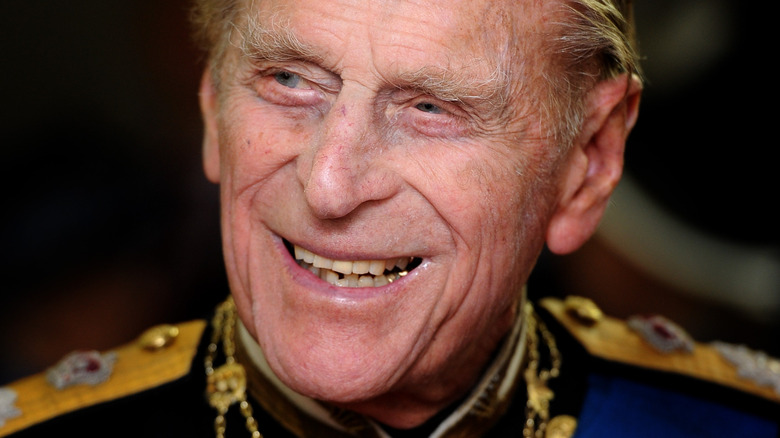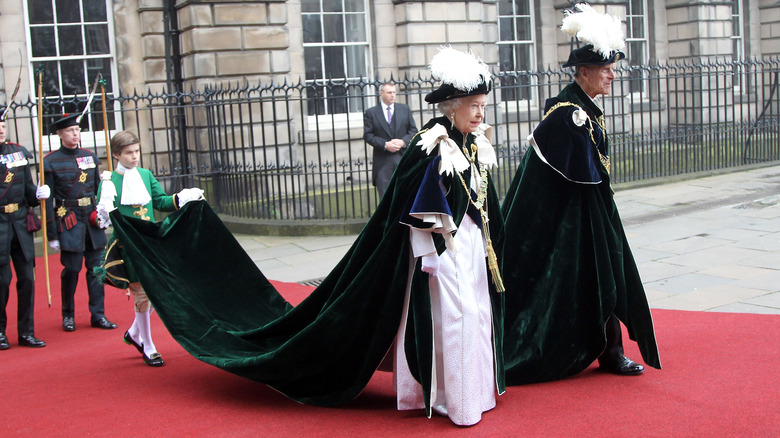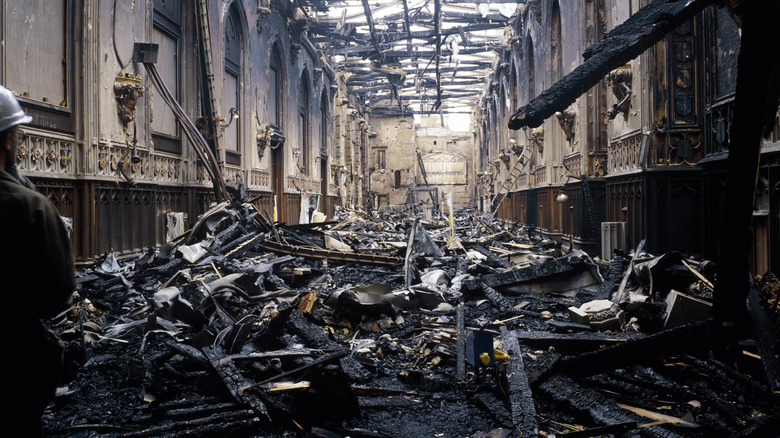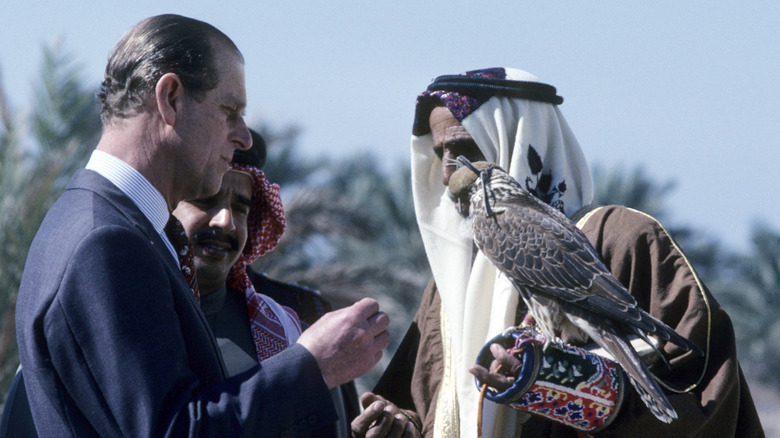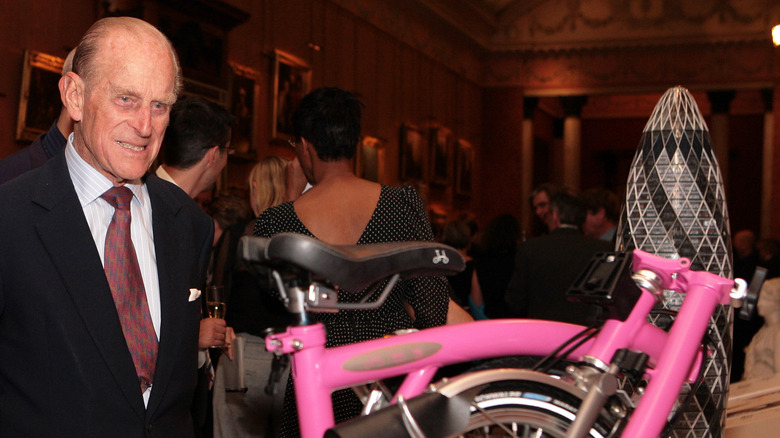Prince Philip's Most Notable Accomplishments
His Royal Highness Prince Philip's official title is astonishingly 133 word long, reflecting his royal status and a very long life — he lived 99 years, passing away in 2021. The Duke of Edinburgh's list of achievements, awards, and chairman positions is even greater, since he was a man of many interests and hobbies.
He was known for his strong support towards nature and animal conservation, but also a variety of other causes, spanning from youth activities to improving communities in Windsor. He loved design and participated in many notable projects, including producing coins for the whole country. He was a man of discipline, involved in the Royal Navy and the Royal Air Force, even battling in the Second World War. A passionate sport lover, he loved playing polo and flying planes. His legacy lives on in many projects he set in motion over the years.
Here are Prince Philip's most notable accomplishments explained.
He founded the Duke of Edinburgh's Award
According to BBC, Prince Philip's idea of a national youth program was based on his own experience in Gordonstoun, a private school in Scotland. The school promoted a healthy lifestyle based on physical activity and personal growth. Consulting his former headmaster Kurt Hahn and the minister of education, he developed a concept of a voluntary organization which targeted boys. The award would promote involvement in community work, sports, and different activities. The Duke of Edinburgh wanted to inspire others to be better: "If you can get a young person to succeed in any one activity, then that feeling of success will spread over into many others."
As per The Duke of Edinburgh's Award official web page, the testing phase of the project was rolled out in 1956, covering "Rescue and Public Service, Expeditions, Pursuits and Projects, and fitness" in young men's lives. The pilot scheme quickly expanded to different institutions, such as the Royal Army, Navy, and Air Force, along with a number of schools in the United Kingdom. In the later years, it became international as well, enabling youth to travel overseas. In 2020, 330,000 young people participated in the program, spending over 1.8 million hours volunteering in their communities.
The youngsters can be awarded with bronze, silver, and gold medals. The ones who receive the golden medals are invited to attend a ceremony at Buckingham Palace. Until Prince Philip's retirement in 2017, they were able to meet him in person.
He was the first president of the World Wildlife Fund
The World Wildlife fund was established in Switzerland in 1961, according to their official website, but the institution soon expanded overseas. When the British National Appeal was founded in the same year, Prince Philip was invited to take over its presidency.
It was Sir Peter Scott who asked Prince Philip to become the first president, knowing well how much Prince Philip loved birds, as explained by Tanya Steele, CEO of WWF-UK, and Marco Lambertini, director of WWF International, to Independent. Having a wide network of connections, enough time, and a substantial influence, the prince was the perfect ambassador for the organization such as WWF. For over 50 years, he advocated for the environment and the institution, visiting more than 50 locations. He kept the position of the British WWF president until 1982, and he transferred to the international stage, serving as president of WWF International between 1981 and 1996.
"Engaged with WWF since its foundation, the Duke of Edinburgh also extended his patronage to various other environmental causes and organisations. His Royal Highness believed we must safeguard the planet and its resources for future generations, and dedicated his life, and position, to inspire individuals and world leaders to protect nature and wildlife," Lambertini pointed out in the statement for WWF.
He was an Honorary Admiral of the Fleet at the Royal Navy
The admiration Prince Philip felt towards the Royal Navy was no secret, dedicating several years to his military career and receiving a long list of awards. The first ones came early, as reported by The Royal Navy, during the time he spent at Britannia Royal Naval College in Dartmouth. He was recognised as best cadet and got both the King's Dirk and the Eardley Howard Crocket honor.
Serving his duty on various battleships — the HMS Ramillies, HMS Kent, HMS Valiant, and HMS Wallace — Prince Philip was involved in some serious battles during World War II, cruising the sea from Asia to the Mediterranean between 1940 and 1943. He got praise as a fearless and resourceful night light commander; reports also mention his great nautical knowledge, mental insight, and firm personality. His next stop was the HMS Whelp, spending a year in Japanese waters as first lieutenant in 1945. The prince was in Tokyo Bay when Japan capitulated, describing those times as tense, emotional, and surreal to Richard Astbury in the interview in 1995 (via Forces).
He achieved the rank of lieutenant commander in 1950, overlooking a ship, the HMS Magpie, until his retirement in 1953. He was awarded with the titles of Honorary Admiral of the Fleet and Captain General of the Royal Marines, keeping both until 2017. In 2011, he got his last military accolade, the title of Lord High Admiral, bestowed by the Queen herself.
He won the British Polo Gold Cup
Prince Philip was an avid polo player, discovering the sport in his early childhood.
His appreciation of the sport was so great, as per Polo Line, that he managed to convince the Queen to set a polo court in Windsor, the private royal residence, in 1954. Setting the court, the prince organized the team as well, establishing The Household Brigade Polo Club in 1955, later renamed to Guards Polo Club, today known as one of the most globally reputable polo clubs. With space and a team, the only thing missing was a competition — the Royal Windsor Cup was born, becoming The Queen's Cup in 1960.
As reported by Royal Central, Guards Polo Club won the British Open Gold Cup in 1957 and 1966, with the prince playing on the team himself. He played on other occasions as well, winning tournaments at Windsor and at the Cowdray Park Challenge, sometimes traveling overseas to play. The country he visited often was Argentina, where he and his team set the record of 40 goals per game in the Hurlingham Open in 1966. He gifted the Duke of Edinburgh trophy to the Club Hípico Militar San Jorge, and the trophy is still in circulation today.
Naturally, the prince was President of Guards Polo Club during his lifetime and also a patron of the Hurlingham Polo Association. His book about polo, "An Introduction to Polo", is still recognised as one of the most respectable books on polo ever known.
He was the longest-serving royal consort in history
Due to Prince Philip's longevity, he became the longest-serving consort in the whole British monarchy, as confirmed by Guinness World Records, serving the country for exactly 69 years and 62 days. He broke the previous record of Queen Charlotte, who occupied the throne for a bit less than 58 years.
Prince Philip also became the longest-living male member of the royal family, and the third longest-living of the whole family three, which extends very far, as per Town & Country.
The statistics of his royal duties are fascinating, attending numerous political, beneficial, and other events in his almost 70-year-long career. As reported by The Heritage Times, Prince Philip conducted no less than 22,219 meetings and 608 visits to 141 countries on his own, plus an additional 251 visits where he accompanied the queen on her duties. He spoke at 5,496 events and participated in 785 organizations.
He received several awards as a pilot
Besides his recognised navy career, Prince Philip had other military talents as well. Confidently flying planes and helicopters, he was always proud of his Royal Air Force medals.
According to Jack Dawin from Airline Geeks, the prince took his first plane flying lesson after he left the navy in 1952, earning his first Royal Air Force wings only a year later. Continuing practice with helicopters, he earned the second Royal Air Force wings in 1956, becoming the first member of the royal family who flew a helicopter right out of Buckingham's palace lawn.
Always a keen member of different societies, Prince Philip performed duties as the Grand Master of the Guild of Air Pilots and Air Navigators long into his later life. He always took a chance to try out new planes, even the big ones, visiting different airports on several occasions and trying out a brand-new Boeing 757 at the Boeing Company.
As a member of the Royal Air Force, he received several awards for his service: Marshal of the Royal Air Force, Air Commodore-in-Chief of the Air Training Corps, Honorary Air Commodore of RAF Kinloss, and Air Commodore of the University Air Squadron (via Forces).
He was the president of the Royal Mint Advisory Committee
As per The Royal Mint, Prince Philip took over the presidency of The Royal Mint Advisory Committee (RMAC) from 1952 to 1999. His role was to manage and oversee the process of designing new coins, seals, and medals produced in the U.K., including the set of coins created for the Queen's coronation. During his presidency, the Royal Mint produced four different portraits of the Queen.
RMAC Secretary Graham Dyer, who worked with Prince Philip on the committee, describes him as a capable and dynamic leader who knew how to deal with a variety of characters in the group, vigorously discussing possible designs. He was a good manager, always dedicated to the goals of the committee. He used his royal rank as an excuse to overpower others only on one occasion, when he protested against the commemorative crown for the 40th anniversary of his marriage — he hated the idea, not designs. He had a great eye for a good design and distinguished taste, which included the love for circular motifs and unification in artistic style. He often used his vast knowledge from other areas of expertise, including experience he had with foreign cultures and lands. He was also an authority on medals: "No one on the Committee could match his knowledge of medals, decorations and regimental badges and in this respect he could bear comparison with the renowned ability of his father-in-law George VI."
He was a knight of several orders
Fitting for a man of royal rank, Prince Philip was a knight of several orders. As reported by ABC News, he was honored with his first knighthood in 1947 when he received the Knight of the Order of the Garter title from King George VI. He was a knight in Denmark, a member of Knight of the Order of the Elephant, and in Greece, acknowledged by the Collar of the Order of the Phoenix. He was also given the title of Knight Grand Cross of the Order of the British Empire.
One knight order is even named after the prince himself. In 1952, the Queen established the Duke of Edinburgh a Knight of the Thistle, an order with the intention of honoring public office members or exceptional Scottish citizens.
Prince Philip received Australia's highest honor in 2015 for his outstanding contribution to the country, closely connected to the British royal family through the Commonwealth. He was the second family member honored in this order, following his son Prince Charles. As Prime Minister Tony Abbott explained in his official statement, Australians appreciated everything Prince Philip has done for the country through the years, specially emphasizing the positive effect of the Duke of Edinburgh Award on youngsters. The following public debate revealed that not all Australians agree with this, with many of them perceiving the ceremony as outdated (via The Sydney Morning Herald).
He was the chairman of the Windsor Castle Restoration Committee
When a fire broke out in Windsor Castle — one of the main royal residencies — in 1992, everyone's thought was on the precious art and historical artifacts trapped in the flames. According to Royal Collection Trust, the majority of artifacts were saved by staff who worked relentlessly to take them out, while 115 rooms, including St George's Hall, were severely damaged.
Bob Ward, a firefighter who was at the scene that day, remembers how Prince Philip showed bravery by helping staff take things out of the castle and overlooking the whole process, making sure everything was saved (via ITV). It was Prince Philip who later took over the presidency of the Restoration Committee, and the final date for finishing the project was set as November 20, 1997, the 50th anniversary of the Queen and Prince Philip's marriage. As reported by BBC, Prince Philip also contributed his ideas in the form of "rough sketches" towards the design of stained-glass windows. The windows portray two scenes from the fire: a firefighter battling flames and a member of the staff carrying out artwork.
The restoration project was awarded the Europa Nostra Award in 1999, a cultural heritage honor given by the European Union (via Royal Collection Trust).
He was the patron of the British Trust for Ornithology
Prince Philip's interest in birds developed slowly, according to Bird Spot, a renowned British bird watching community. As a patron of the British Trust for Ornithology (BTO), the prince was involved in its conservation activities between 1987 and 2020, sharing his own passion as a bird observer.
It took a Hasselblad camera to gain his enthusiasm for ornithology in 1956. While he was sailing between Africa, Sri Lanka, and Australia, continuing to New Zealand and further out into the Pacific ocean, all the way across the Antarctic circle, the variety of birds caught his attention. He started to take photographs of them, amassing quite a collection. In 1962, he wrote a book, "Birds from Britannia," including the images from his travels. Not only curiosity, but his conservational needs as well were affected by these in-person experiences, as he wrote in his contribution to "Wildlife Crisis": "It is only a matter of short time of birdwatching and photography before the question of survival of the species begins to dawn on the mind."
Always keen when it came to engineering, Prince Philip was included in the process of designing the new section for birds at London Zoo and even filmed a documentary in one of his wooden bird observatories out in the country. (It must be noted, though, that his love for bird watching and conservation was questioned on many occasions due to him simultaneously being a passionate hunter.)
He founded The Prince Philip Designers Prize
Prince Philip was also an occasional artist, a painter, and a great patron of the arts, reports The Star. He put his design skills forward on multiple occasions, including when he designed a wedding anniversary — their fifth — gift for the Queen, using gold and precious stones, including diamond and sapphire. He even included a sentimental twist: the bracelet lock was created out of letters: E and P. The piece was produced by French jewelry house Bousheron.
His interest in design led him to establish The Prince Philip Designers Prize in 1959 as a post-war attempt to revive the appreciation of quality design. With the prince's approval, the award was expanded to international entries as well, also adding a new prize, The Prince Philip Student Design Awards (via Chartered Society of Designers).
The award still exists today, honoring British designers who achieve to positively affect public perspective on design and elevate its value. As per Design Council, the prince was involved as a chair of the judging panel and award presenter until he semi-retired from his royal duties in 2011. Some of the most prominent names in the British design industry have received the award, which was given according to the standards of excellence but also commercial success.
